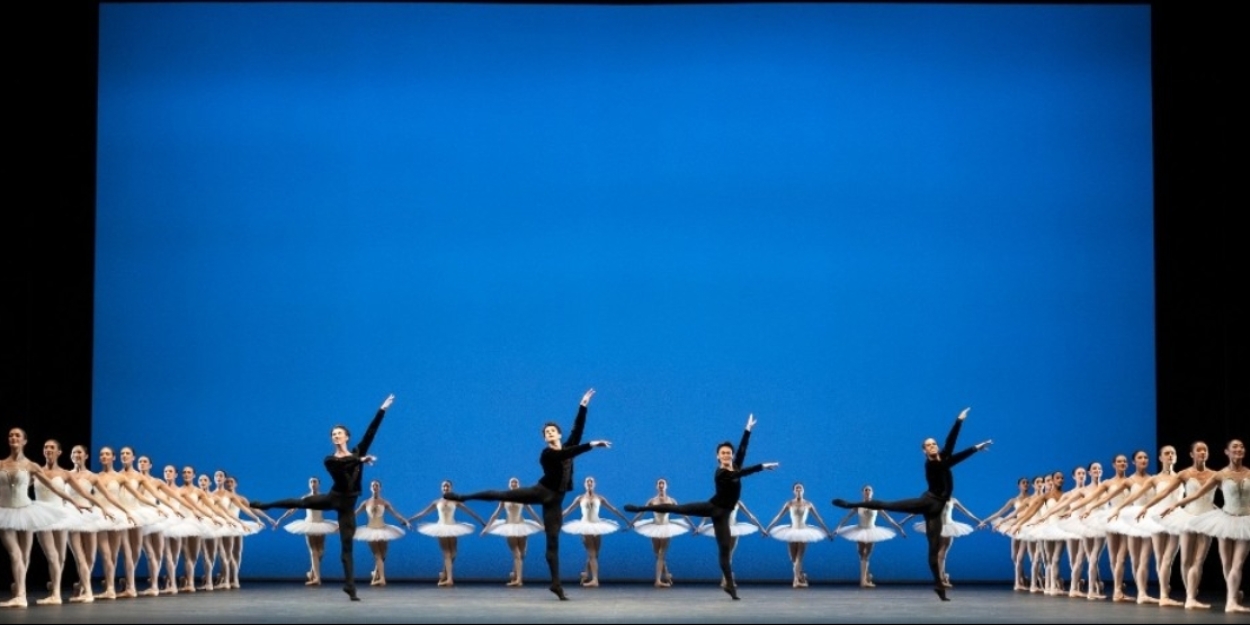Review: BALANCHINE: THREE SIGNATURE WORKS, Royal Ballet And Opera
Marianela Núñez is developing like a fine wine

![]() Watching Balanchine should be a pleasure, but that isn't always the case. Why? Because we all know what the work can mean if fully realised. And if it isn't? One can have a lovely evening at the ballet, but the experience doesn't transcend.
Watching Balanchine should be a pleasure, but that isn't always the case. Why? Because we all know what the work can mean if fully realised. And if it isn't? One can have a lovely evening at the ballet, but the experience doesn't transcend.
The Royal Ballet continue The Dance Reflections by Van Cleef & Arpels Festival with Balanchine: Three Signature Works. And the triple bill is also an excuse to celebrate Patricia Neary. Neary has been setting Balanchine works for 57 years, and been a member of the RB family for a long time. This programme is her final one in London, and she'll be missed by all, as her staging capabilities speak for themselves.
Opening the evening is Serenade. Originally created on students of the School of American Ballet in 1934. It's a well known piece, and allows the Corps to dance as if soloists. The ladies of the RB did a good job, but overall it lacked urgency of movement and liberal port de bras. The tempo was good…so here's hoping things build over the eight show run.
The principal cast also offered more than acceptable work. Melissa Hamilton looks the part as the Dark Angel, Mayara Magri is well suited to the dynamic Russian Girl and Lauren Cuthbertson offered a confident premiere as the Waltz Girl. Cuthbertson devoured space and brought valuable drama to the final section of the piece, but one also looks forward to where she takes the role.
Ryoichi Hirano brings presence to the occasion and William Bracewell understands the Balanchine attack. But, as referenced above, it didn't transcend as a whole.
The middle work is the 1929 Prodigal Son, and works well as a vehicle for Cesar Corrales. I've always labelled Corrales as more of a Wizkid, but here he shows even more dramatic capability. The biblical fable could be any Saturday night really: bored whippersnapper, tells his family to jog on, heads out, has a blast, all goes wrong and he comes home with his tail between his legs.
I'm all for a period piece, and the décor by Georges Rouault is worth seeing alone, but I did wonder why this work and not something else. Balanchine has created interesting, bound in style movement for the men, and The Siren, danced confidently by Natalia Osipova, is the stuff of ballet legends, but I kept thinking why rather than yes.
Closing the evening is Symphony in C, and it's a masterful work to an extraordinary score. Bizet wrote the composition when just 17-the mind boggles! The Royal Ballet has been dancing the piece since 1991, and the 2025 cast aren't struggling.
Fumi Kaneko and Vadim Muntagirov both brought precision and ease to the Allegro Vivo, yet the movement lacked personality in a way. There's far more play, risk and individualism to be had.
Anna Rose O'Sullivan and Daichi Ikarashi led the Allegro Vivace acceptably, but didn't necessarily tap into the briskness on offer. Ikarashi is a confident dancer, as is O'Sullivan normally, yet on opening night she seemed without the needed effervescence.
In the Fourth movement, Leticia Dias and Joseph Sissens were an incredibly handsome pair. Dias is going places, and her dancing feels fresh, and Sissens continues to offer work that's sophisticated and expert.
The ballerina of the night was Marianela Núñez in the adagio (Second Movement), expertly partnered by Reece Clarke. We're all aware of Núñez's talent, but she really is developing like a fine wine. I've always found her a musical dancer, yet now she also embodies the music emotionally speaking, and is experienced enough to play with her phrasing.
With this understanding, Balanchine is the ideal choreographer to dance. Núñez encapsulates the legato feel, but also goes where the score takes her. There's an andante section in the middle of the movement and Núñez transcends. She finds a crescendo in the choreography, which Balanchine found in Bizet, and subtly builds before our very eyes before returning to her Cavalier and more sedate pace. I've seen this happen to other ballerinas, which suggests this section is the stuff of legends. Lucky them (and us when it happens).
The company as a whole look polished, and no one can question Neary’s staging prowess. But personally speaking I think more can be done to elevate the work. I craved crisper footwork; specifically coupé action, cou de pied positioning and posé beyond the toe. Petit allegro with more lift and crossed battu. Liberal port de bras, especially a less academic first position when in transition. And overall, more excessive movement in the upper body.
All of the above are foremost intentions of the dancer, and if realised, bring Balanchine’s work truly to life. Where thought becomes movement in the moment, and we all transcend the corporeal and start to consider how it makes us feel, rather than just acknowledging what it is. That's what Balanchine can be-and what I'm always looking for.
Balanchine: Three Signature Works continues at the Royal Ballet and Opera until 8 April
Photo credit: Foteini Christofilopoulou
Reader Reviews

Videos

